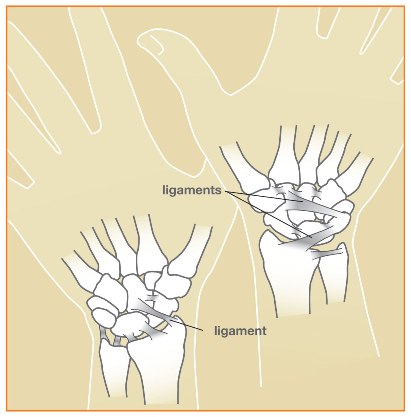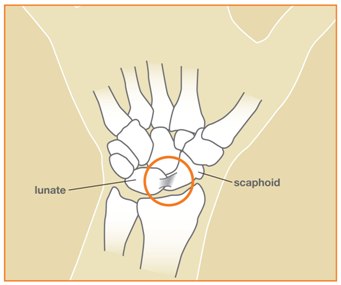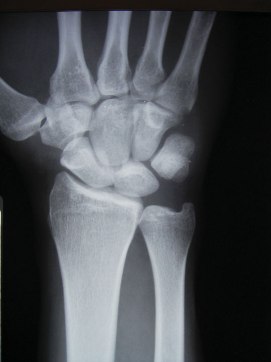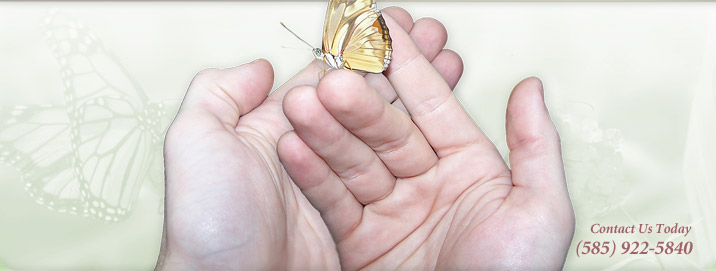A sprain is an injury to a ligament. Ligaments are the connective tissues that connect bones to bones; they could be thought of as tape that holds the bones together at a joint (see Figure 1).
These types of injuries are common in falls and sports. The wrist is usually bent backwards when the hand hits the ground such as when someone slips or trips and falls. These injuries also frequently occur during sports such as football and snowboarding. After injury, the wrist will usually swell and may show bruising. It is usually very painful to move.
The most common ligament to be injured in the wrist is the scapho-lunate ligament (see Figure 2). It is the ligament between two of the small bones in the wrist, the scaphoid bone and the lunate bone. There are many other ligaments in the wrist, but they are less frequently injured. Sprains can have a wide range of severity; minor sprains may have minimal stretch of the ligaments, and more severe sprains may have complete ruptures of the ligament(s).
Initially your doctor will examine your wrist, to check its flexibility and stability and to see where it hurts. X-rays are taken to check the alignment of the wrist bones and to check for any fractures (see Figure 3). Occasionally other studies such as Magnetic Resonance Imaging (MRI) may be performed to help determine the diagnosis. Treatment may range from immobilization in a splint or cast to surgery. Surgery may consist of arthroscopic or open surgery. Arthroscopic surgery is performed through small (3-4 millimeter) holes in the skin where a camera and other special instruments are placed inside the wrist to confirm the diagnosis and potentially treat the ligament injury. Some injuries require open surgery in which an incision is made to repair and/or reconstruct the ligament. A variety of methods exist, which could include metal pins, screws, and other specialized devices. Patients are usually placed in a splint or cast after surgery which may need to remain on for 6-12 weeks after surgery. Your doctor will determine the best course of treatment.
The term "chronic" refers to an old injury of greater than several months to years. If there is no or minimal cartilage damage, the ligament may be reconstructed as discussed above. If there is moderate to severe cartilage damage (arthritis), symptoms may be pain, stiffness, and swelling. These may be first treated with splinting and non-steroidal anti-inflammatory medicines, and later with cortisone injections. If these treatments fail, surgery may be an option. This may be a partial wrist fusion, removal of arthritic bones ("proximal row carpectomy"), wrist replacement, or complete wrist fusion. Your doctor will determine the best course of treatment.
Occasionally fractures occur along with wrist sprains.These may require additional surgery to repair the fracture with metal pins, screws, or plates. Cartilage damage may also be present which does not show up on the x-ray.
Despite optimal treatment, wrist sprains occasionally result in residual long term pain, stiffness, and swelling. The wrist is a complex group of bones, cartilage, and ligaments that are in a delicate balance for precise movements. Injury can upset this balance and damage previously well-tuned moving parts.
There is much research underway searching for better methods to treat these serious injuries.They include stronger and more precise ligament reconstructions using either local tissues (tendons) or distant tissues (ligaments from the hand or foot).

Figure 1: Ligaments of wrist

Figure 2: Diagram of the scapholunate ligament (circled)

Figure 3: X-ray showing gap between scaphoid and lunate from ligament rupture (left) and normal x-ray of opposite wrist (right)
© 2006 American Society for Surgery of the Hand





